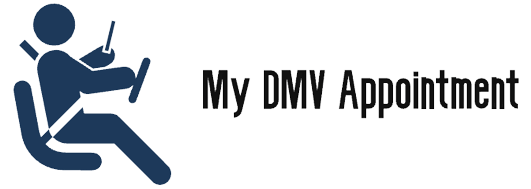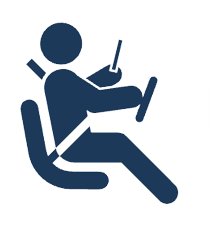Welcome to California! If you’ve just moved, you have a very short window to get your new license. By law, you must transfer your out-of-state driver’s license to a California license within 10 days of establishing residency.
The most stressful question is: “Do I have to retake the tests?”
Here is the simple, correct answer:
- Yes, you MUST take the written (knowledge) test.
- No, your driving (behind-the-wheel) test is WAIVED as long as you have a valid, unexpired license from another U.S. state.
This guide will walk you through the new, streamlined application process, the exact documents you need, and what to expect at your mandatory in-person appointment.
Your First Step: Start Your Application ONLINE (Do This Before You Go)
Do not start by going to the DMV. The new, fastest way to transfer your license is to pre-fill your application online. This saves you 30-40 minutes of paperwork at the office.
- Go to the official CA DMV website: dmv.ca.gov
- Find the “REAL ID” section and click “Apply for a REAL ID.” (All new CA licenses are now REAL ID compliant).
- Complete the Online Application: This tool will have you fill out all the information from the old paper (DL 44) form.
- Upload Your Documents: You can (and should) upload photos of your required documents (see Section 3) directly to the portal.
- Get Your Confirmation Code: At the end, the system will give you a Confirmation Code. Write this down or save it to your phone. This code is your key to a fast visit.
How to Schedule Your Mandatory In-Person Appointment
You must visit a DMV office in person to complete your license transfer. An appointment is highly recommended to avoid an all-day wait.
The process is simple and can be done online or by phone. We have a complete, step-by-step guide that walks you through the entire booking process, including how to find “same-day” slots.
For the full guide, please see our main article: How To Schedule An Appointment At DMV California (CA)
When you are booking, just remember to:
- Select “Office Visit Appointment.”
- Choose the service for a “New Driver’s License” or “REAL ID.”
The Required Document (The REAL ID List)
You must bring your original, physical documents to your appointment (even if you uploaded them). Photocopies are not accepted.
- 1. Proof of Identity (One required):
- U.S. Passport or U.S. Birth Certificate
- Permanent Resident Card
- 2. Proof of Social Security Number (One required):
- Social Security Card
- W-2 or 1099 form (must show full SSN)
- 3. Proofs of California Residency (TWO required):
- You must bring TWO recent (within 60 days) documents from different sources with your name and new CA address.
- Examples: Utility bill, lease agreement, bank statement, or cell phone bill.
- 4. Your Out-of-State License Card:
- You must be prepared to physically surrender this card to the DMV.
What to Expect at Your Appointment (The Real Process)
This is what will happen at your scheduled appointment.
- Check-In: An agent will check your appointment confirmation.
- Present Documents: You will be called to a window to present your Confirmation Code (from Step 1) and all your physical REAL ID documents.
- Surrender Your License: You will hand over your valid out-of-state license to the agent.
- Pay the Fee: You will pay the $41 application fee. This fee pays for 3 attempts at the written test.
- Pass the Vision Test: You will be given a simple vision screening.
- Take Your Photo: The agent will take your new license photo.
- Take the Written (Knowledge) Test:
- You will be sent to a touch-screen computer to take the 18-question “Basic Knowledge Test” for new residents.
- You must get 15 questions correct (83%) to pass.
- (This is not the full 46-question test for new drivers).
- Get Your Temporary License: Once you pass, you will be issued a temporary paper license (valid for 60 days). Your new, permanent REAL ID card will be mailed to you.
FAQs from New California Residents
YES. The driving test is only waived if you physically surrender your valid out-of-state license. If you have lost it, you must bring an official driving record from your previous state and you will be required to take the behind-the-wheel driving test.
You will have to take the driving test. The driving test waiver only applies to valid, unexpired licenses.
No, but the convictions do. California does not transfer the point total from your old state, so you start fresh. (If you want to know how the new system works, here is our guide on check points on your CA license). However, the convictions (like a DUI) will be visible on your new record and will be used by your insurance company.
You cannot transfer a suspended license. You must first clear the suspension with your home state. If your license was suspended in California and you are trying to get it back, you must follow the California license reinstatement process.


Add Comment